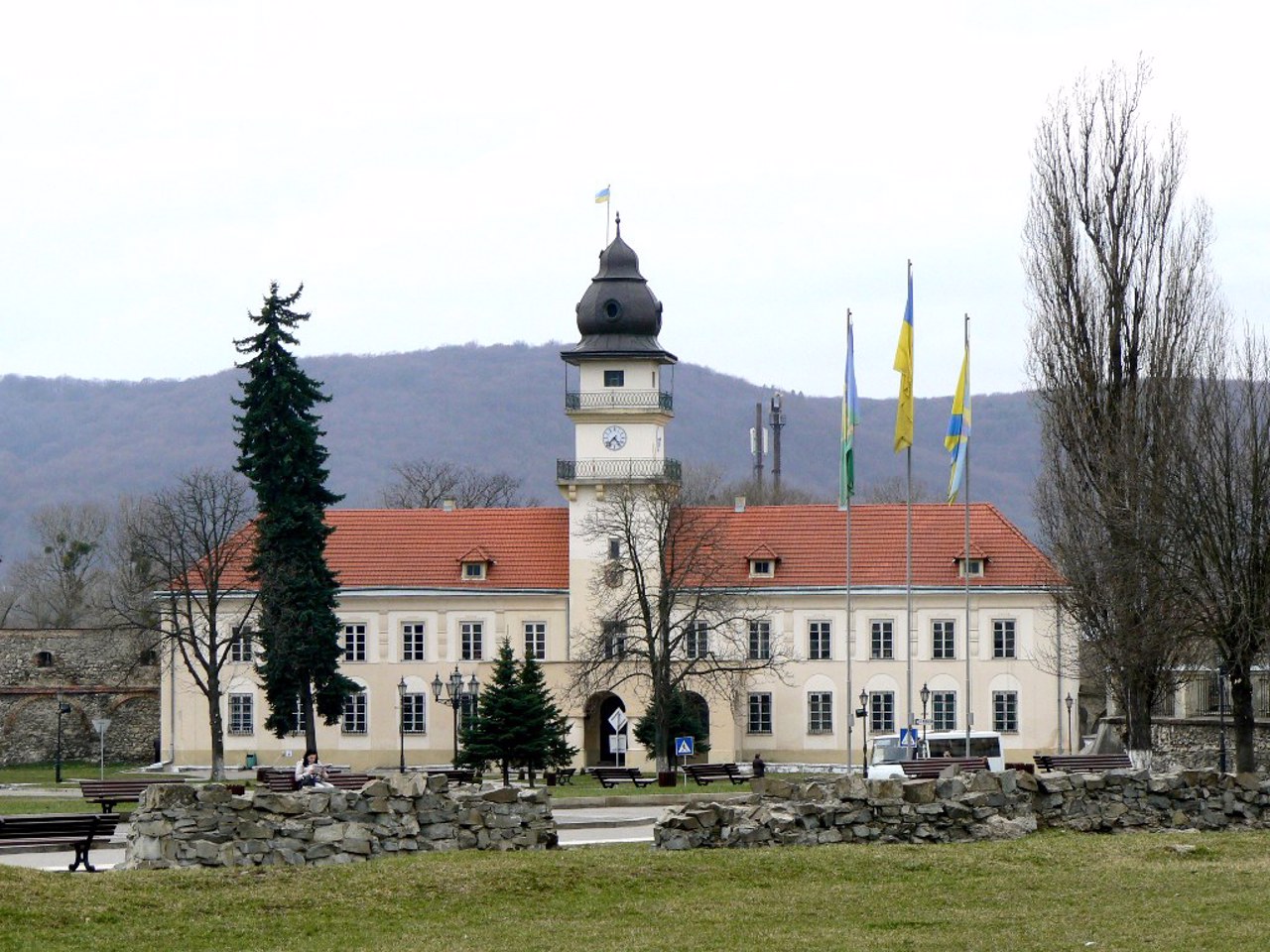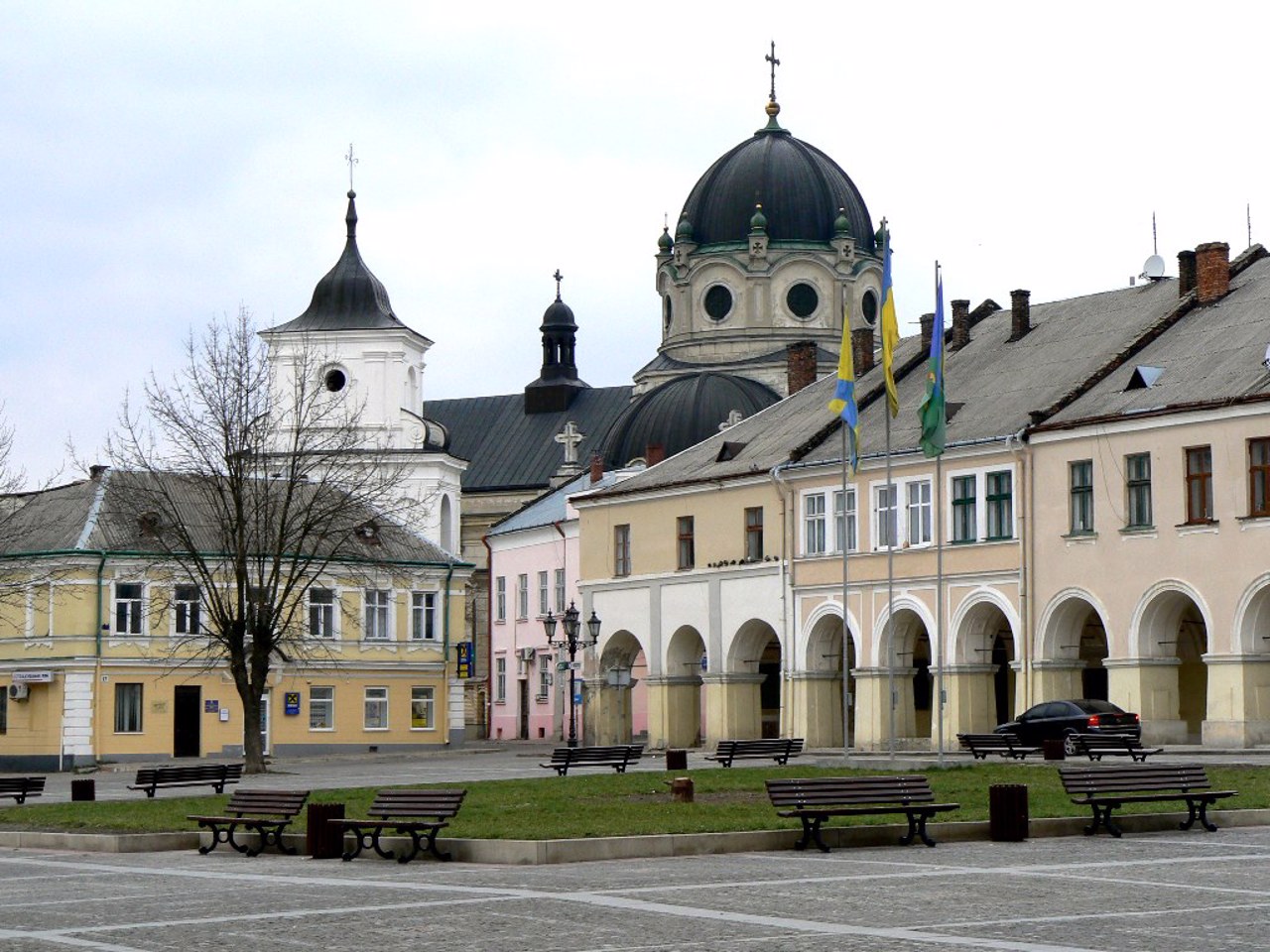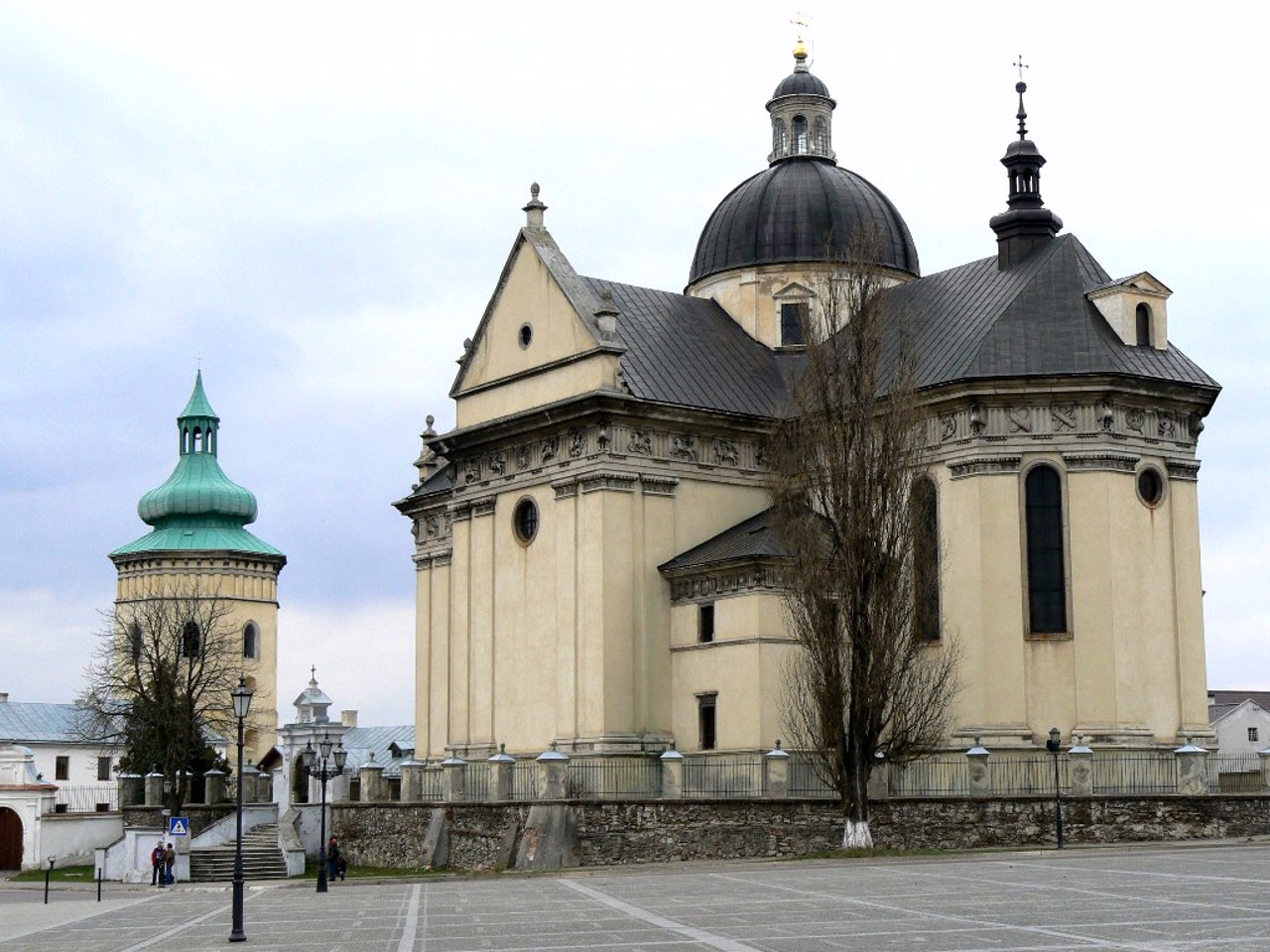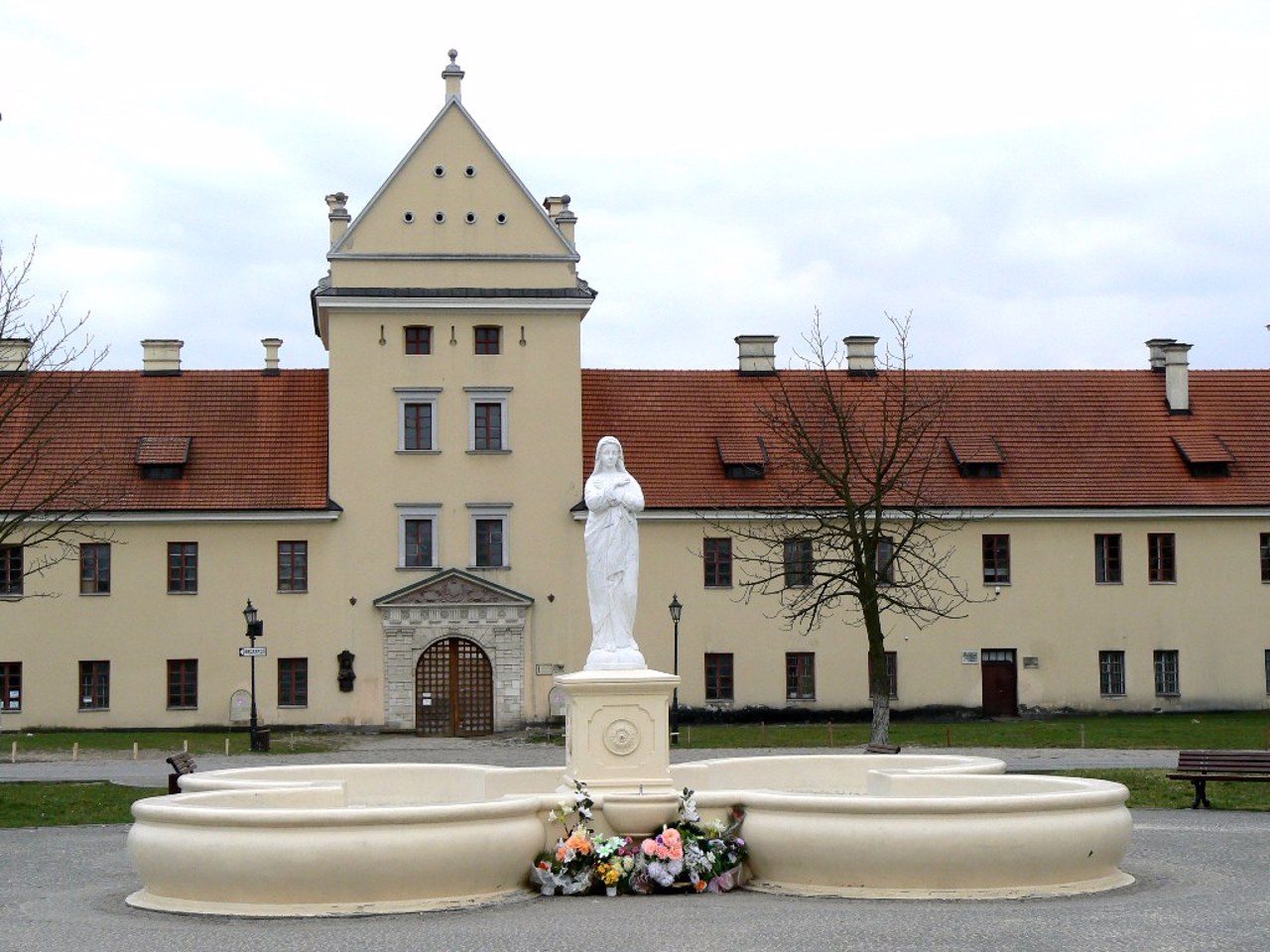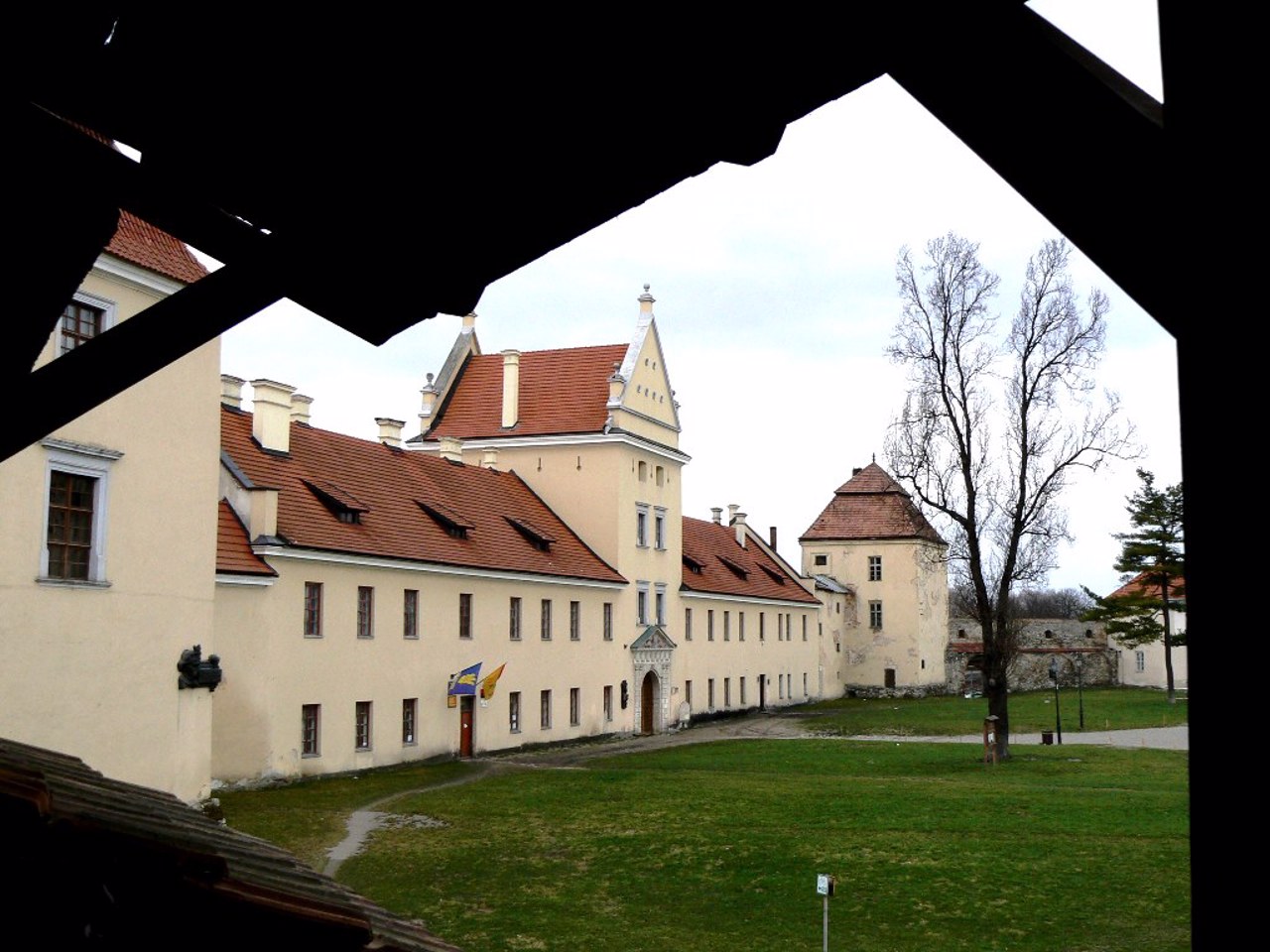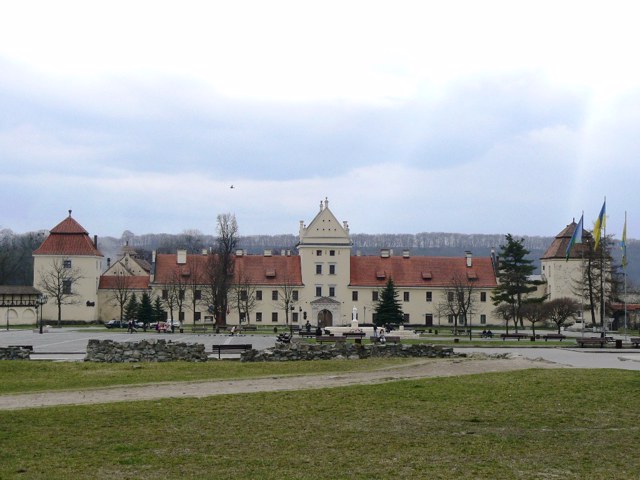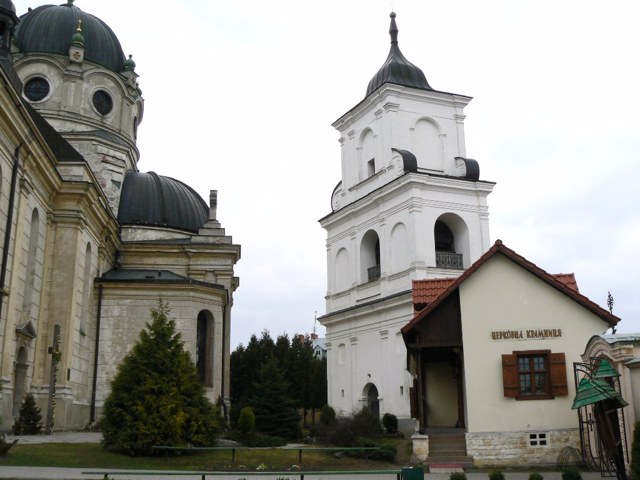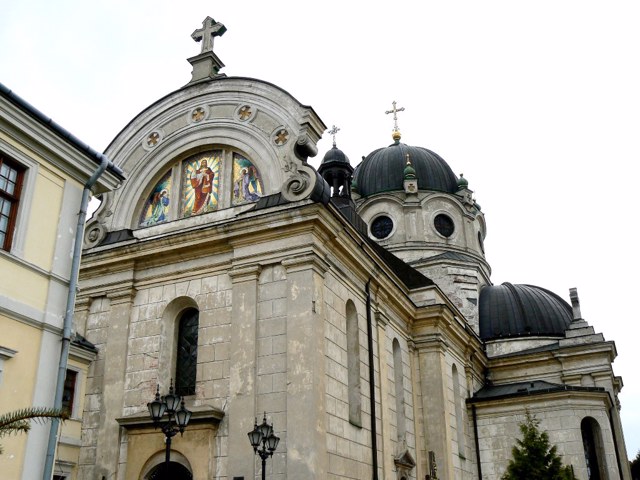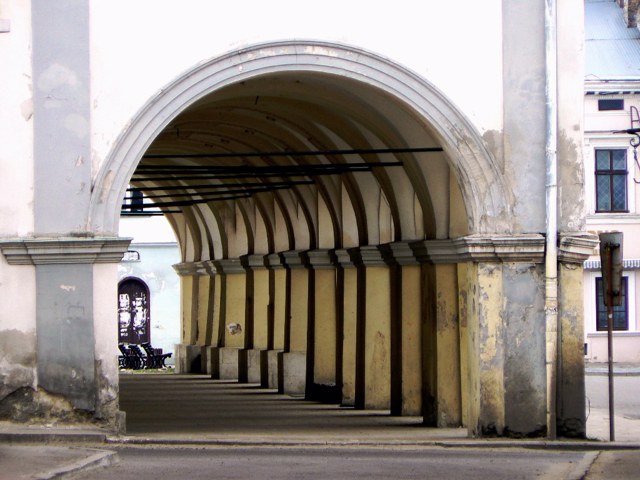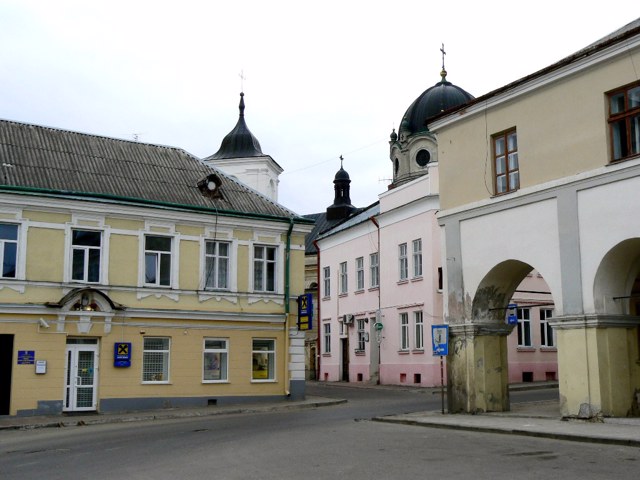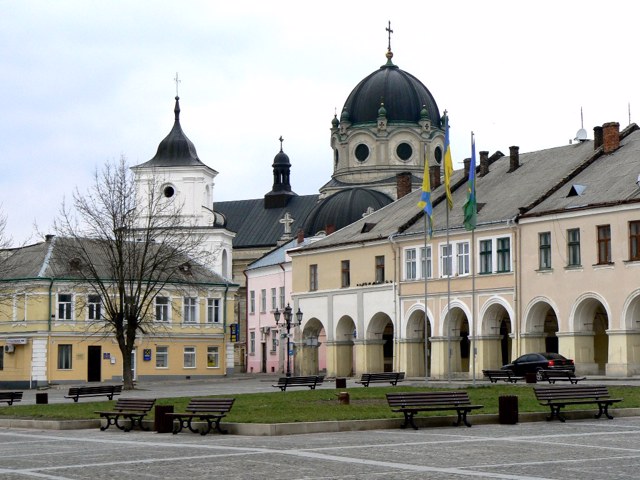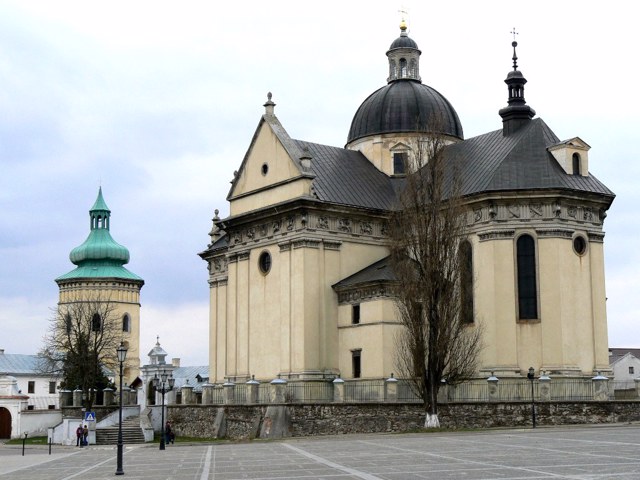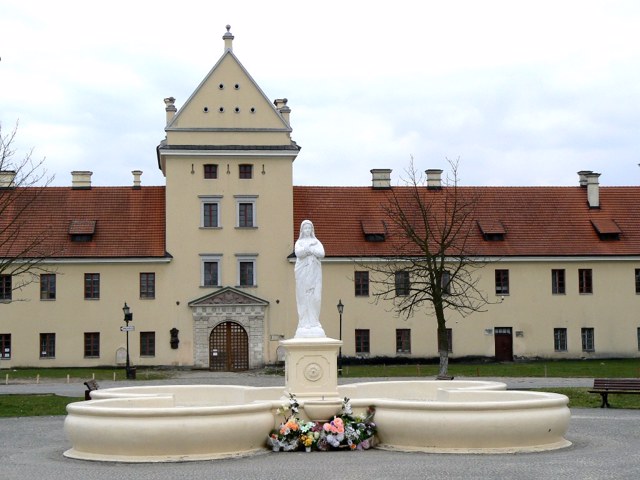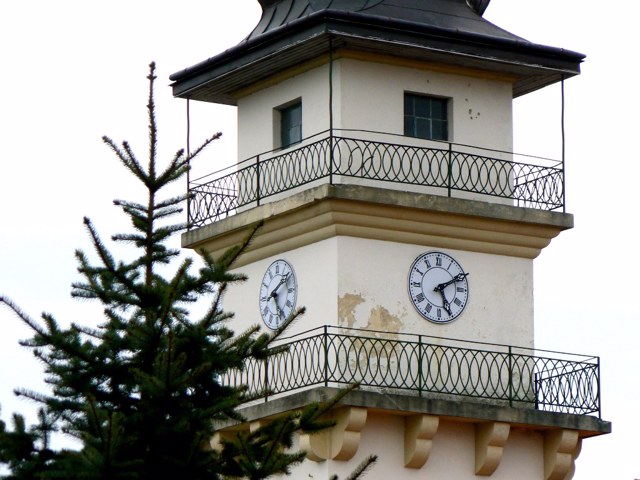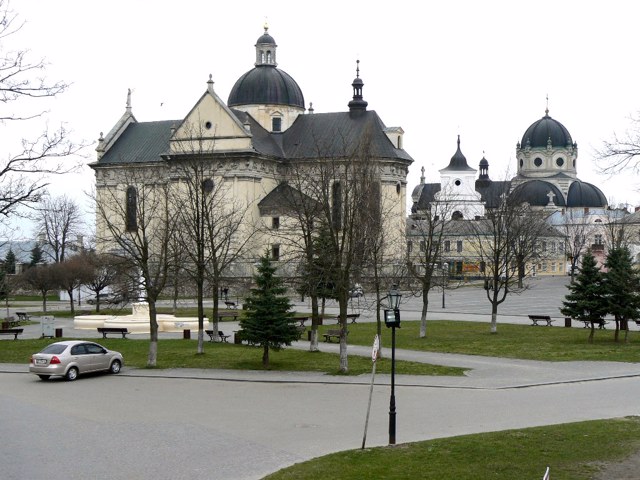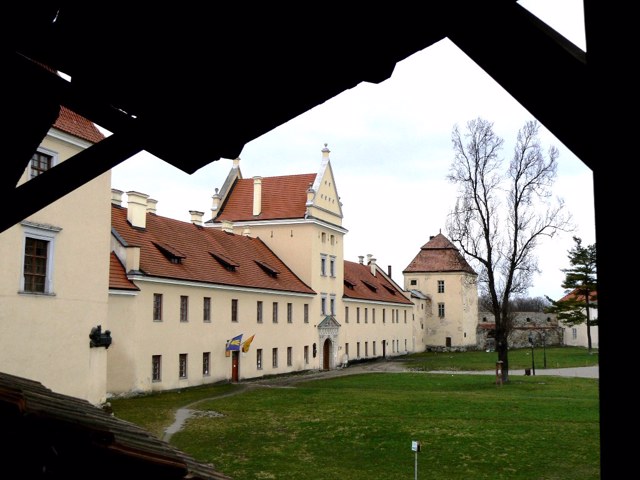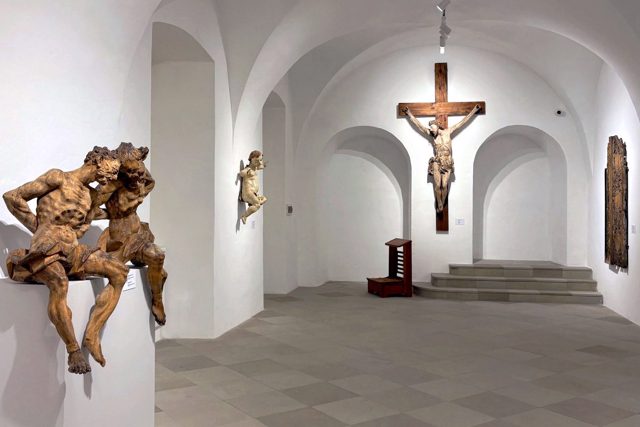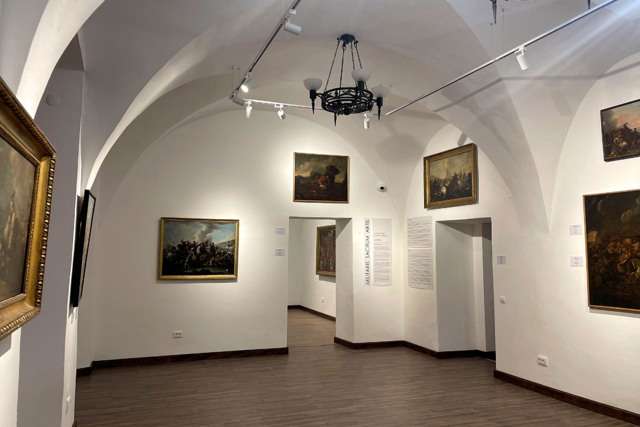Functional temporarily unavailable
General information about Zhovkva
The cozy historical town of Zhovkva is located northwest of Lviv.
It arose in the 14th century on the site of the village of Vynnyky. The first chronicle mention dates back to 1368. Zhovkva got its current name from the name of Belz Voivode Stanislav Zholkevsky, who owned the city.
In the years 1594-1606, the Zhovkva Castle with the "Zvirynets" garden was built, which for some time was the residence of King Yan III Sobesky. In 1706-1707, the Russian Tsar Peter I visited here twice. Since the 18th century, Zhovkva belonged to the Radzyvylls.
The city was badly damaged during the First World War, when it changed hands several times, but was nevertheless rebuilt. The Renaissance ensemble of ...
The cozy historical town of Zhovkva is located northwest of Lviv.
It arose in the 14th century on the site of the village of Vynnyky. The first chronicle mention dates back to 1368. Zhovkva got its current name from the name of Belz Voivode Stanislav Zholkevsky, who owned the city.
In the years 1594-1606, the Zhovkva Castle with the "Zvirynets" garden was built, which for some time was the residence of King Yan III Sobesky. In 1706-1707, the Russian Tsar Peter I visited here twice. Since the 18th century, Zhovkva belonged to the Radzyvylls.
The city was badly damaged during the First World War, when it changed hands several times, but was nevertheless rebuilt. The Renaissance ensemble of buildings in the historical center of Zhovkva, which was conceived as the "Ideal City", looks wonderful. Many historical monuments have been preserved. The restored market square, along the perimeter of which there are trading houses with arcade galleries.
In Soviet times, the city was renamed Nesterov in honor of the Russian pilot Petro Nesterov, who died nearby in 1914, the author of the famous "dead loop" (a monument is preserved in the village of Volia-Vysotska).
Well-developed tourist infrastructure.
Затишне історичне місто Жовква розташоване на північний захід від Львова.
Виникло у XIV столітті на місці села Винники. Перша літописна згадка датується 1368 роком. Нинішню назву Жовква отримала по імені белзського воєводи Станіслава Жолкевського, який володів містом.
У 1594-1606 роках був споруджений Жовківський замок з садом "Звіринець", який деякий час був резиденцією короля Яна III Собеського. У 1706-07 роках тут двічі гостював проїздом російський цар Петро I. З XVIII століття Жовква належала Радзивиллам.
Місто сильно постраждало під час Першої світової війни, коли воно кілька разів переходило з рук в руки, але все ж було відновлено. Чудово виглядає ренесансний ансамбль забудови істо ...
Затишне історичне місто Жовква розташоване на північний захід від Львова.
Виникло у XIV столітті на місці села Винники. Перша літописна згадка датується 1368 роком. Нинішню назву Жовква отримала по імені белзського воєводи Станіслава Жолкевського, який володів містом.
У 1594-1606 роках був споруджений Жовківський замок з садом "Звіринець", який деякий час був резиденцією короля Яна III Собеського. У 1706-07 роках тут двічі гостював проїздом російський цар Петро I. З XVIII століття Жовква належала Радзивиллам.
Місто сильно постраждало під час Першої світової війни, коли воно кілька разів переходило з рук в руки, але все ж було відновлено. Чудово виглядає ренесансний ансамбль забудови історичного центру Жовкви, яка задумувалася як "Ідеальне місто". Збереглося багато історичних пам'яток. Відреставрована ринкова площа, по периметру якої розташовані торгові будинки з аркадними галереями.
У радянські часи місто було перейменовано на Нестеров на честь загиблого неподалік в 1914 році російського льотчика Петра Нестерова, автора знаменитої "мертвої петлі" (в селі Воля-Висоцька зберігся пам'ятник).
Добре розвинена туристична інфраструктура.
Сплануй своє перебування у Zhovkva
What to see and where to go in Zhovkva
Tourist attractions and museums of Zhovkva
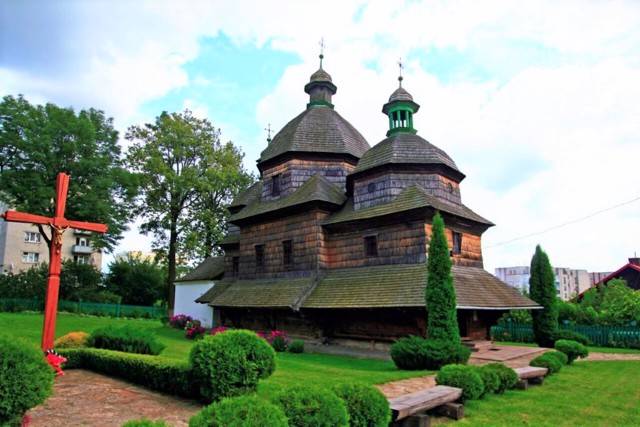
Holy Trinity Church
Temple , Architecture , UNESCO world heritage site
The wooden church of the Holy Trinity in Zhovkva is an outstanding work of Galician folk architecture.
Included in the UNESCO World Heritage List in the category "Wooden Churches of the Carpathian Region of Ukraine".
Inside is a unique iconostasis made by local craftsmen (beginning of the 17th century) with 50 icons.
In the 1970s, the Trinity Church was restored, and in the 1990s, it was handed over to the Greek-Catholic community of the city.
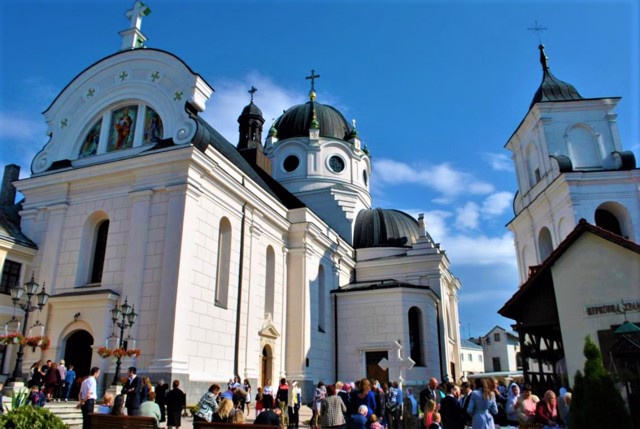
Nativity of Basilian Fathers Monastery
Temple , Architecture
The Basilian Monastery of the Nativity of Christ with the rich Baroque Church of the Sacred Heart of Christ was built in Zhovkva in 1612 on the site of the wooden Basilian Church.
The first abbot was Metropolitan Dosytheus, buried in the crypt under the church. Initially, the complex was built in the Renaissance style and had a defensive character. The reconstruction carried out in 1905 completely changed its appearance. The Renaissance carved white stone southern portal has been preserved since the 17th century.
The wonderful iconostasis of the work of the famous master Ivan Rutkovich is now kept in the National Museum named after Andrey Sheptytskyi in Lviv. Modernist wall paintings of 1911-1939 have been preserved in the interior. the works of Yulian Butsmanyuk, which, in particular, depict figures of the Ukrainian People's Republic of Ukraine and the West Ukrainian People's Republic. The portrait of Metropolitan Andrey Sheptytskyi can be guessed in the image of Savaof.
The relics of Saint Parthenius are kept in the Church of the Heart of Christ.
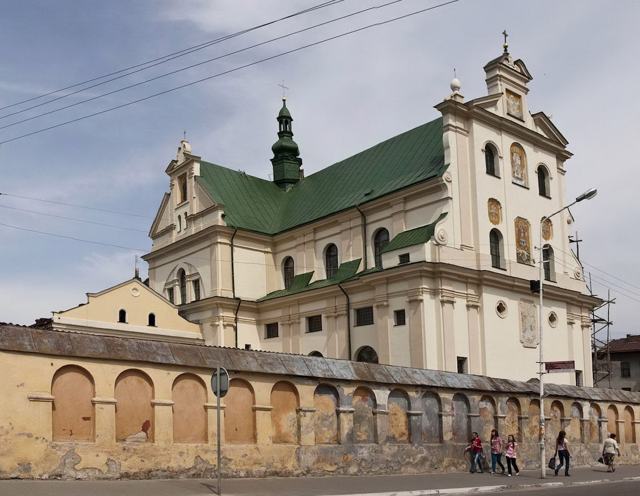
Saint Josaphat Church (Dominican Monastery)
Temple , Architecture
The majestic church of the Assumption of the Virgin Mary of the Dominican monastery was built in Zhovkva in 1655 at the expense of Sofiya Teofila Sobeska, who owned the city at the time - the mother of the future Polish king Yan III Sobeskyi.
The Catholic church in the early baroque style was built on the site of the wooden church of the Virgin Mary. The monastery is surrounded by high defensive walls with a round corner tower, which was part of the system of city fortifications. In the 18th century, the complex was supplemented with monastic cells.
Sofiya Teofila Sobeska is buried in the church, as well as one of her sons, Mark - the brother of King Yan III Sobeskyi, who died near Batoh in 1652. The allegorical tombstones of the work of the German sculptor Andreas Schlueter have been preserved.
During the Austrian rule, part of the premises of the monastery were taken away, and during the Soviet times the temple was closed.
In 1995, the Church of the Assumption of the Virgin Mary was rededicated as the Greek Catholic Church of the Holy Martyr Josaphat, and the Zhovkva-Sokal diocesan administration of the Ukrainian Greek Catholic Church was located in the monastery.
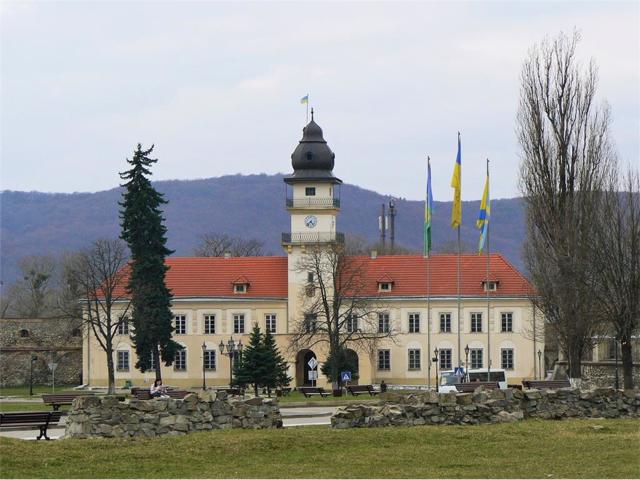
City Hall (Museum "Zhovkva Tower")
Architecture , Museum / gallery
The Neo-Renaissance-style Zhovkva City Hall is part of the Rynok Square ensemble.
The first city hall in Zhovkva was built by architect Peter Beber in 1687. A sundial and a sample arshin were placed on its walls. The old building was dismantled in 1832 due to its state of disrepair, and for a whole century the magistrate sat in the castle.
The current city hall was built in 1932. It was built according to the competitive project of the architect Bronislav Viktor on the site of the former barracks and casemates.
In pre-war times, the city trumpeter played the tune "heynal" at noon from the clock tower. Now, at noon, the bells of the clock play a part of the national anthem of Ukraine.
In the tower of the city hall there is a historical and local lore exposition "Museum "Zhovkva Tower" with access to the observation deck.
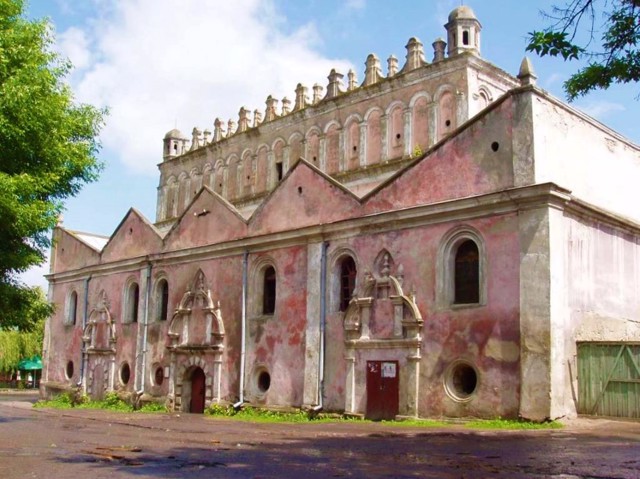
Defense Synagogue
Temple , Architecture
The Zhovkva Synagogue is an original and well-known religious building in the Renaissance style with Baroque elements, which was part of the system of city fortifications. The synagogue was adjoined by the city walls and the Jewish Gate, and it itself could have been a powerful defensive tower.
It was built in 1698 with the assistance of King Yan III Sobesky on the site of a burnt wooden synagogue.
In 1941, the ceiling and interior were destroyed by an explosion.
Until the early 1990s, the synagogue building in Zhovkva was used as a warehouse. Restoration is currently underway, and the opening of the Jewish Center of Galicia is planned.
Zhovkva in news and blogs
Reviews Zhovkva
Geographical information about Zhovkva
| {{itemKey}} | {{itemValue}} |
|---|---|
| Region |
Lviv |
